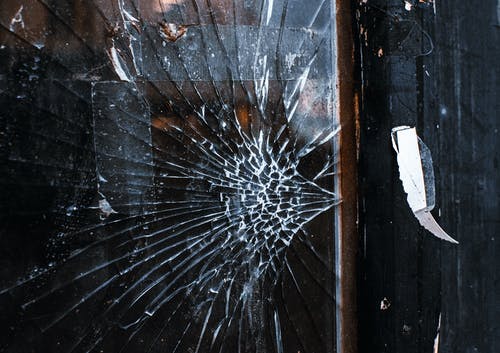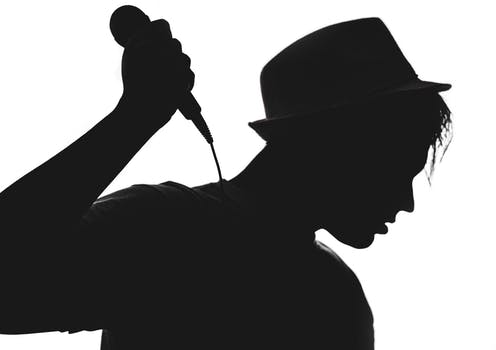Despite what most people think or say about glass breaking, a human singing voice can actually shatter or break a glass with their voice.
What thing you need to know is that a human’s threshold for pain is at about 120 decibels and there have been cases where opera singers can easily sustain notes of above 100 decibels
Every object has a resonant frequency – the natural frequency at which something vibrates.
Wine glasses, because of their hollow shape, are particularly resonant.
If you run a damp finger along the rim of a glass, you might hear a faint, ghostly hum – the resonant frequency of the glass.
Or you can simply tap the glass and hear the same frequency.
To shatter the glass, a singer’s voice has to match that frequency, or pitch, and the glass must have microscopic defects.
Related: Here is an article I wrote showing you how to breathe easily while singing
What musical note can break glass?

Before you can determine if human voice can actually shatter glass, you need to know the musical note that will make that possible
Remember when I said that for this to be possible then the resonant frequency of the object has to be met and then exceeded by the voice
The note that a wine glass or bottle makes when you hit it or run your hands around the rim is called resonant frequency
This resonant frequency is simply the frequency at which the glass vibrates more efficiently.
So if you really want to break glass with your voice as a singer, you need to match this tone or definitely go higher.
The note will definitely be around one octave above Middle C to have the glass break and it also depends on the size of the glass.
The real trick is singing loudly enough.
Even with expensive, thin-walled, lead crystal glasses, which vibrate with a clear tone that doesn’t damp down quickly, the amplitude required is at the limit for the human voice.
An untrained singer can do it relatively easily with good amplification but achieving the same thing without a speaker has only been done once on TV, by singer and voice coach Jaime Vendera for the Discovery Channel’s Mythbusters show.
Another thing to note is the frequency at which glass shatters
Glass shattering waves carry more energy than other waves out there
They are mainly shorter and choppier and as a result most of them pass through per second and at roughly 556 Hertz
So basically this is the frequency that your voice needs to be at to effective break or shatter glass
Related: Here is an article I wrote asking the question can a singer be called an artist?
Why does glass break?
Dust in the air, faster cooling, and contact with other surfaces when hot will cause microscopic cracks and stress in the surface of the glass.
When pressure is put on the glass by an attempt to bend it, those cracks immediately give way and the glass breaks. … Thus the glass will break
What frequency does glass break?
Sound is acoustic energy.
Like electricity, sound energy travels through substances in waves, which “excites” the substance’s particles and causes them to vibrate at a certain frequency.
Frequency refers to the number of waves passing through a given point over a given period of time, and we measure frequency in hertz: one hertz equals one wave per second.
Every substance has a natural, or resonant, frequency — the frequency at which its own atoms vibrate.
For example, suppose your bass guitar-playing neighbor cracks the plaster on your walls when she plays a low, driving bass line.
The frequency of a bass guitar’s lower, deeper notes run from 40 to 150 hertz.
(The quality of your neighbor’s speakers also will affect the quality of the sound.)
Thus, the plaster’s resonant frequency must fall somewhere in that range, because when a substance encounters a frequency it matches, it absorbs the energy rather than reflecting it.
Glass-shattering waves carry more energy.
They’re shorter and “choppier”; thus more of them pass through per second, at roughly 556 hertz.
To shatter glass, the note’s frequency must be the same as that of the glass. That’s one condition.
The note also has to be loud too, a quality known as intensity.
Intensity is measured in decibels.
While conversational tones average 50 to 60 decibels, a trained vocalist might have the pipes to approach the approximately 105 decibels needed to break glass.
Even then, he or she would have to be so close as to risk serious facial cuts if the glass explodes.
More likely, a boost of electronic amplification would be needed.
Finally, the glass must be strategically selected.
A wine glass is a good choice.
It’s fine and thin – unlike, say, a beer stein – which maximizes the amount of stress per particle.
An empty glass cracks more readily (although less dramatically) than one containing wine; air, being less dense than liquid, carries sound better.
And if you can find a wine glass with a flaw in its structure, even an invisible one, that helps by providing a weak spot.

